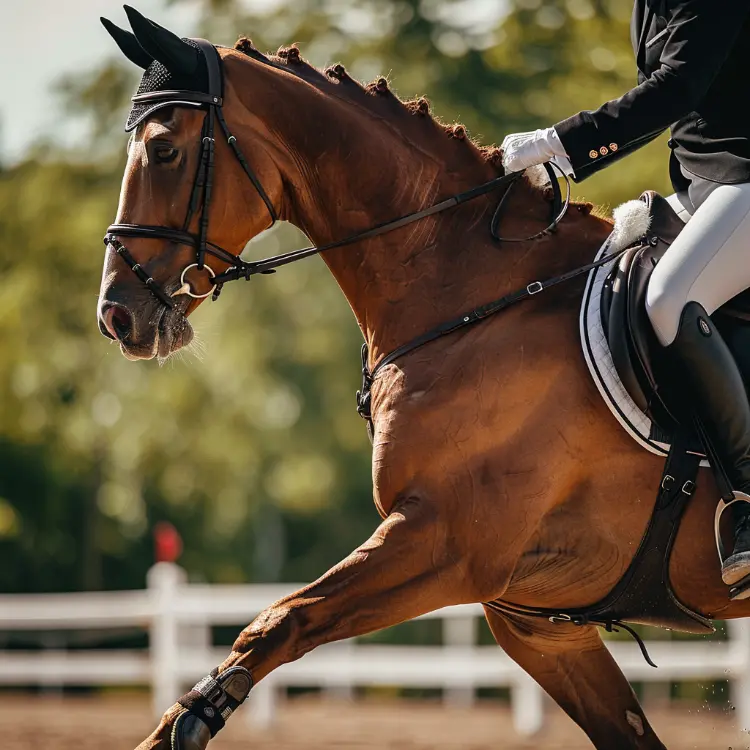Ensuring safety while horseback riding is paramount, and one of the most critical skills to master is the equine emergency stop. This technique is akin to an "emergency brake" for your horse, providing a way to regain control when a horse bolts or becomes unresponsive to standard commands. Proper training and consistent practice are essential to effectively implement this safety measure, which can prevent dangerous situations and potential injuries.

The equine emergency stop is a maneuver that enables a rider to safely slow down and halt a horse that has started to bolt or run uncontrollably. This technique is not a substitute for regular training but an additional safety measure to be used in unexpected situations.
When a horse bolts, a rider's instinct may be to pull back on both reins; however, this can sometimes be ineffective. The emergency stop involves a more nuanced approach:
This method is based on the principle that it is challenging for a horse to run straight ahead while its head is turned sharply to the side. While most horses will find it difficult to continue bolting in this position, it's important to note that some exceptionally flexible horses may still manage to run, albeit less effectively.
Before attempting the emergency stop while mounted, groundwork is essential. Here's a step-by-step guide to preparing your horse:
The goal is for the horse to eventually touch its nose to its body with minimal effort from the handler, demonstrating responsiveness. This training should be done on both sides of the horse for consistency.
Once your horse is responsive on the ground, you can test the emergency stop while riding:
It's crucial to practice this technique on both sides and to ensure the horse is comfortable with the bit in its mouth during these exercises.
While specific statistics on the use of the equine emergency stop are not widely published, the importance of safety in horse riding is well-documented. According to the National Electronic Injury Surveillance System, horseback riding accounts for approximately 50,000 emergency room visits annually in the United States (Consumer Product Safety Commission). Proper training in emergency techniques like the stop can play a significant role in reducing these incidents.
The equine emergency stop is a crucial safety tool for riders. By understanding the technique, preparing through groundwork, and practicing consistently, riders can enhance their control and safety on horseback. Remember, safety is not just about reacting to emergencies but preventing them through proper training and preparation.

The Crucial Role of Habituation and Consistency in Equine Training
Imagine the thrill of bonding with your horse, the wind in your hair as you ride across the field, and the trust that forms from a well-trained equine companion. However, achieving this level of harmony requires more than just sporadic lessons; it demands the establishment of clear, consistent habits through repetition. This article delves into the significance of habit and repetition in horse training, offering insights into how these principles can lead to safer and more enjoyable riding experiences.
The Hidden Benefits of Challenges in Horse Training
Challenges in horse training can often be perceived as setbacks, but they hold the potential to become invaluable learning experiences. A particularly stubborn horse, for instance, can teach a trainer the importance of patience, adaptability, and innovation. While some horses may respond to traditional methods, others require a more creative approach, pushing trainers to expand their skill set and knowledge. This article delves into the unexpected advantages of facing difficulties in equine training and how they contribute to the development of both the horse and the trainer.
Mastering Equine Behavior: Techniques to Prevent and Stop Bucking in Horses
Understanding and addressing the issue of bucking in horses is essential for a safe and enjoyable riding experience. While some riders may take pride in their ability to handle a bucking horse, true horsemanship lies in effective training to prevent such behavior. Bucking can be a sign of discomfort, confusion, or resistance in horses, and it's crucial to identify and address the underlying causes. With the right approach, most bucking issues can be resolved, ensuring a harmonious relationship between horse and rider.